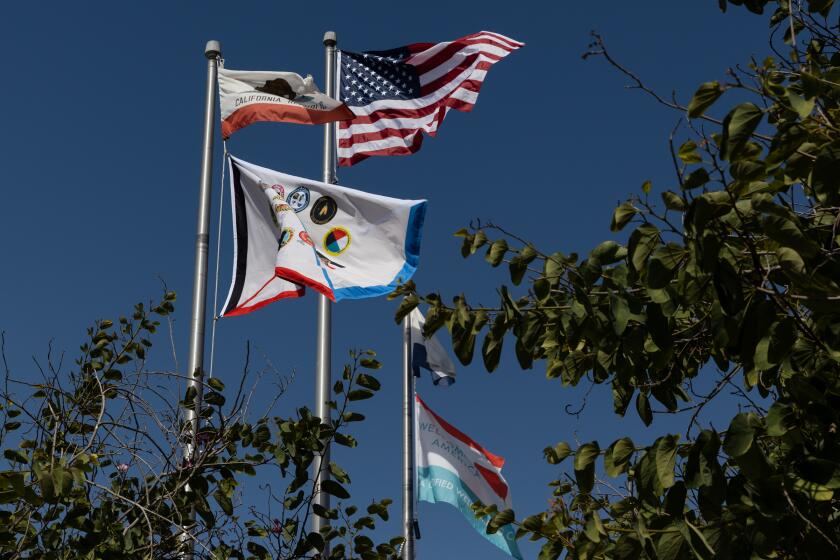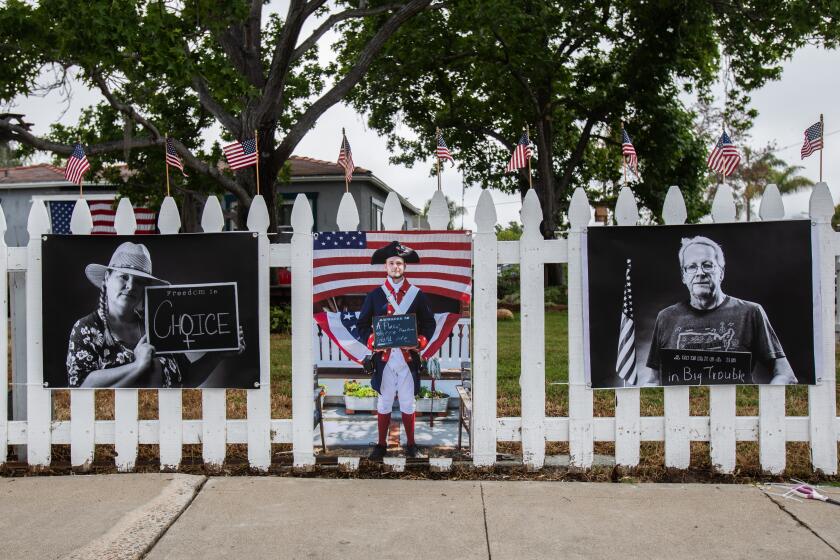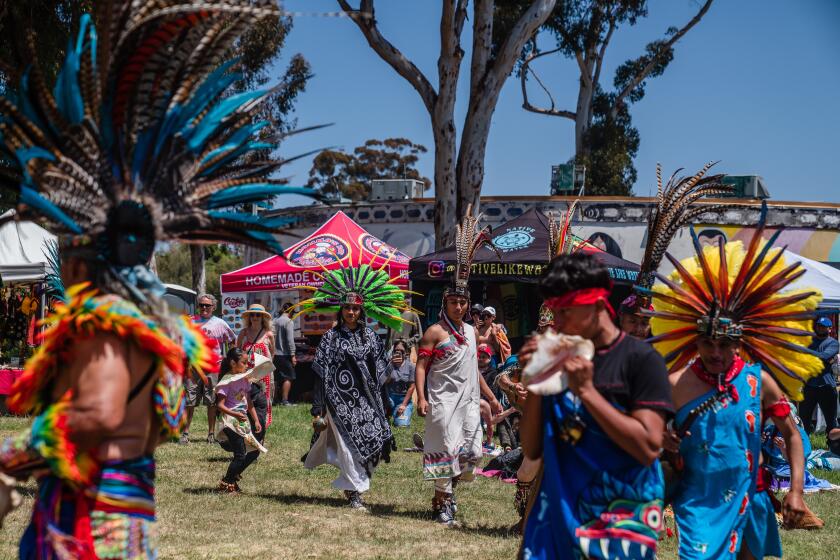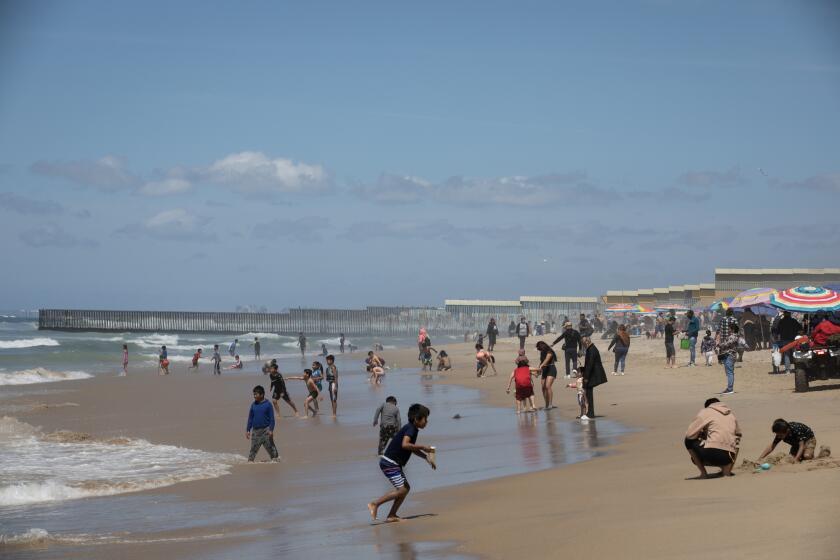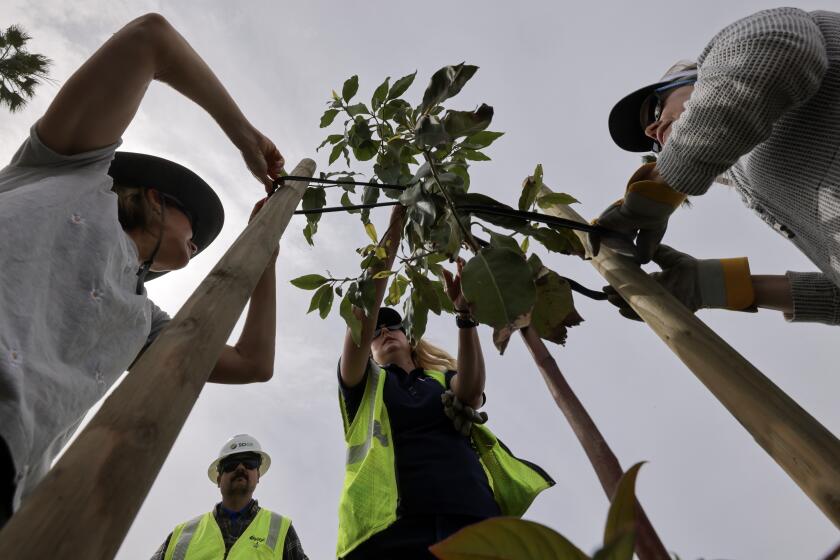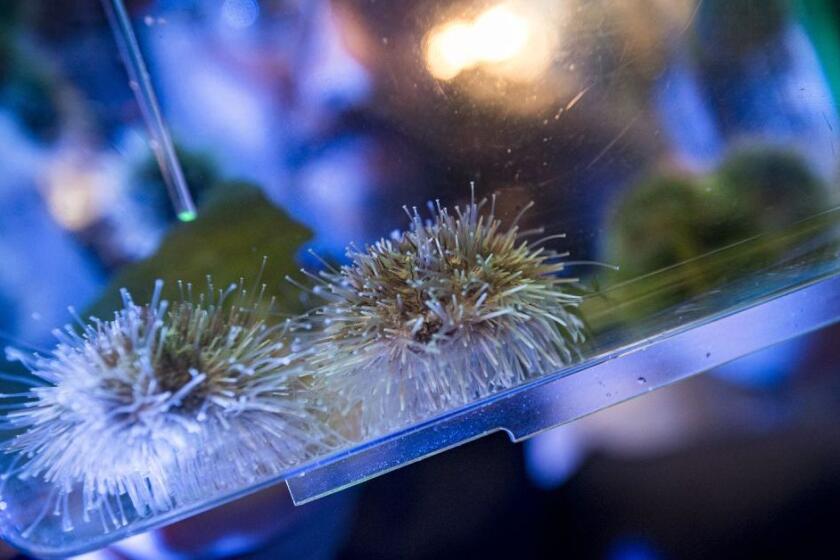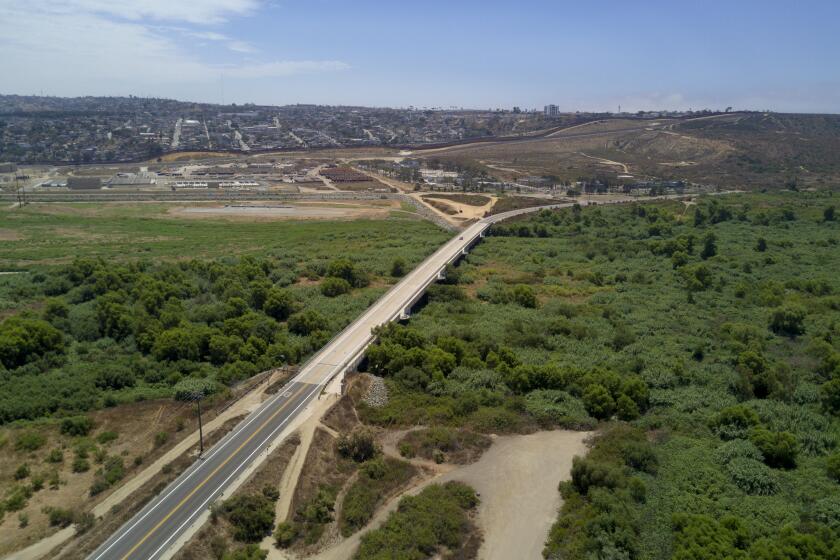Cabrillo Monument’s plants, animals in national study
All along the Bayside Trail at Cabrillo National Monument on Saturday, an unusual cry arose.
“Got it!”
Visitors were taking photographs, hoping to capture evidence of the area’s plants, birds, mammals and other organisms in an ambitious, nationwide project called BioBlitz.
Lemonade berry? Click.
Western fence lizard? Click.
Spotted towhee? Click.
Cabrillo is one of about 120 places in the National Park Service taking part in the biodiversity survey. Participants went on guided hikes, explored exhibits from two-dozen nature and wildlife organizations, and heard talks by scientists.
“Our mandate is to protect and preserve what’s here so that future generations can have an experience similar to what we are enjoying,” said Andrea Compton, Cabrillo’s superintendent. “But we have to understand what’s here before we can preserve it.”
BioBlitz started a decade ago as a joint project by the park service and National Geographic. One park was chosen each year, and naturalists, volunteers and students spent a day or two fanning out and taking a snapshot of what was there.
This year, with the park service celebrating its centennial, the project was expanded. In California, other locations participating Saturday included Joshua Tree, Channel Islands, Pinnacles and Yosemite.
Hundreds of people came to the event at Cabrillo, and even though it was a postcard-worthy day, their attention wasn’t on the expansive views across the bay to Coronado and San Diego’s downtown skyline. Visitors were looking down, to see what was growing out of the ground or scurrying in the bushes.
Andrew Rosales led about 30 people on a Bayside Trail hike, pointing out different species and encouraging the hikers to take photos with their cameras and phones. The shouts of “Got It!” soon spread.
Diego Perez, 10, was there with several other fifth-grade students from High Tech Elementary School in Point Loma, who have been doing BioBlitz-related projects for several months. He had an iPad with him and was busy snapping pictures.
“I like learning about species I didn’t even know existed,” he said.
Melissa Rowe, a retired hospital social worker who moved here recently from New England, was one of the few people in the group without a camera. “I just wanted to take it all in without equipment in front of me,” she said. She had borrowed a magnifying glass, though, to see the California buckwheat blossoms up close.
“I love this place,” she said. “I check the computer to see what’s going on here and heard about this. It’s a wonderful way to learn about the flora and fauna of Cabrillo.”
Back at the visitor center, a television screen displayed photos and information from the BioBlitzes in other parks. Throughout the day, images from Cabrillo were added to the mix, uploaded though a computer program called iNaturalist.
“You are part of history,” Compton, the superintendent, told the participants. “What you are doing will be part of the record at Cabrillo forever.”
Get Essential San Diego, weekday mornings
Get top headlines from the Union-Tribune in your inbox weekday mornings, including top news, local, sports, business, entertainment and opinion.
You may occasionally receive promotional content from the San Diego Union-Tribune.


